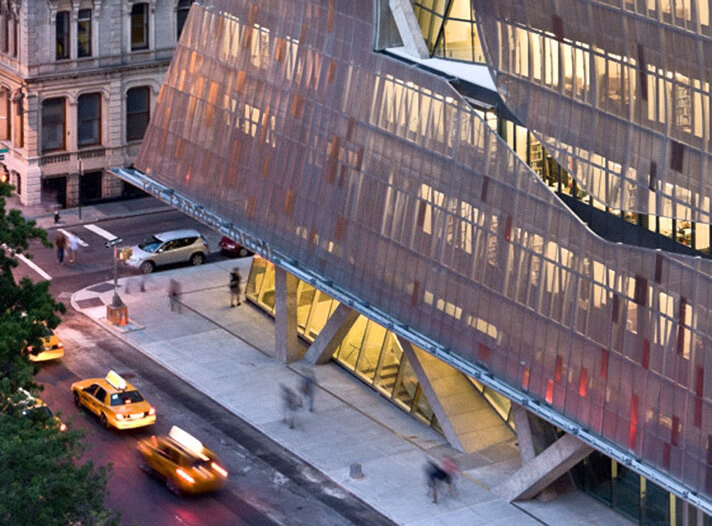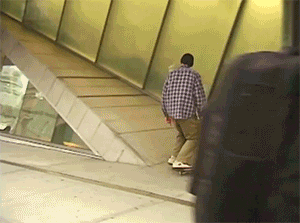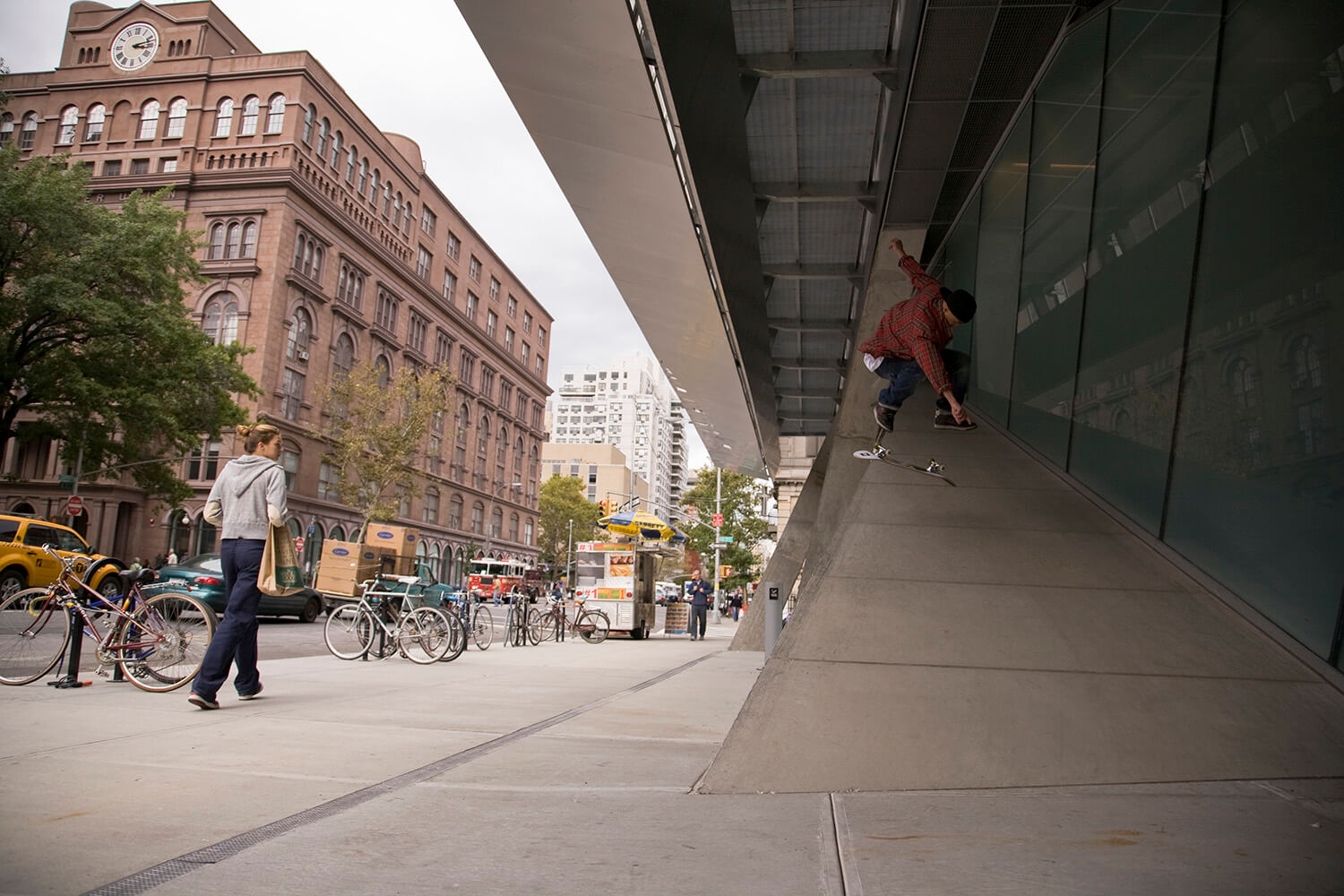
Knobs get conquered in a number of ways. Beyond the obvious — actually being de-knobbed — two things happen to render them obsolete.
One, is that skateboarding evolves. The cliché goes something like: “without struggle, there is no progress.” When spots are knobbed, our most able-bodied athletes see an invitation to have quicker feet and longer ollies. This can be seen via people skating past the knobs at Pyramid Ledges, and between the knobs at Verizon Banks — though it will take a generation of people thinking Tiago is “normal” before the re-knobbed Veterans manny pad gets unlocked again. (Its first post-knob unlocking occured under the supervision of Anthony Pappalardo in the 1870s, A.K.A. in Fully Flared.)
Option two is playing the long game. You wait for weather, rust and general wear-n’-tear to do their things.
41 Cooper Square first opened in 2009, to much talk in architecture circles for its use of sustainable technologies or some shit like that. We were interested in a far less sophisticated feature of the design: a smooth triangle slab of concrete that extended from its apex at the underside of the building’s second floor, forming an embankment down to the sidewalk, and into a network of a wallie-able pillars that were almost the last things Paul Tucci ever skated.
Photo by Jay Maldonado. 2010.
The area surrounding Cooper Square is notorious within skateboarding for the fact that it has absolutely fuck all to skate, yet has somehow still conned us all into trying. The bank was a welcome ACTUAL spot in a neighborhood we often traversed without anything to look forward to. So it’s ironic that a building The New York Times described as being “all about the informal use of public space” would knob its most serendipitous appendage, which invites exactly that. (“Well, uh, if you fall, uh you could uh, sue us, uhhhhh….” obvs.)
The four spiked bars stretching across the bank were a real jam-up for skateboarders, but not so much for the other athletes this feature of the building informally invited: drunk people. This was 2010, and thus the Four Loko era at American colleges. Young people out on the streets were looking for shit to climb on. Many a late night would you walk by bemoaning the skatestopped bank, only to see a young lady at the top of the triangle with one heel on — but otherwise in her Friday best — pleading to a crowd below, “Sarah! I’m up here! Take a picture! Kevin! Kevin! Where the fuck are you going? Sarah! Kevin! I hate you guys! Kevin!”
Little did we realize that these one-heeled warriors were doing God’s work. By climbing on the knobs at various states of inebriation throughout the 2010s, they’d loosen their screws, one nanometer at a time.
In 2017, the first of four fell. Stu Kirst dropped in and ollied the remaining three, skimming the bottom of the bank before hitting the sidewalk.

In 2019, as evidenced by the New York footage in the JHAKX video, only half of the original four remain — INFORMALLY ;) inviting a mini montage to be filmed there:
The section at the bank begins @ 13:38 in case the video doesn’t begin playing from there (it should.)
And now, as we approach the great unknown of 2020, we are left to wonder if full liberation of the Cooper bank is upon us. Or will Manhattan’s inevitable descent below sea-level happen first, making an art college look extra petty for knobbing our fun during humanity’s last days?








Don’t take this the wrong way, but I am forever grateful that of all things, you utilize your literary talents on making a couple skateboarders laugh.
“The stairs in front of the Metropolitan Museum of Art are 14 inches deep, which is what makes them such a nice place to sit, rest, chat with a stranger. Mr. Mayne’s stairs are a standard 11 inches, like a conventional fire stairwell. They are hard to sit on, and they gave me vertigo when I began my descent from the third floor. Does this sound picky?”
L O L at this bit in the Times story. Every literate skateboarder on earth could be a Times architecture writer.
Very enjoyable read great content
whatever happened to tucci?